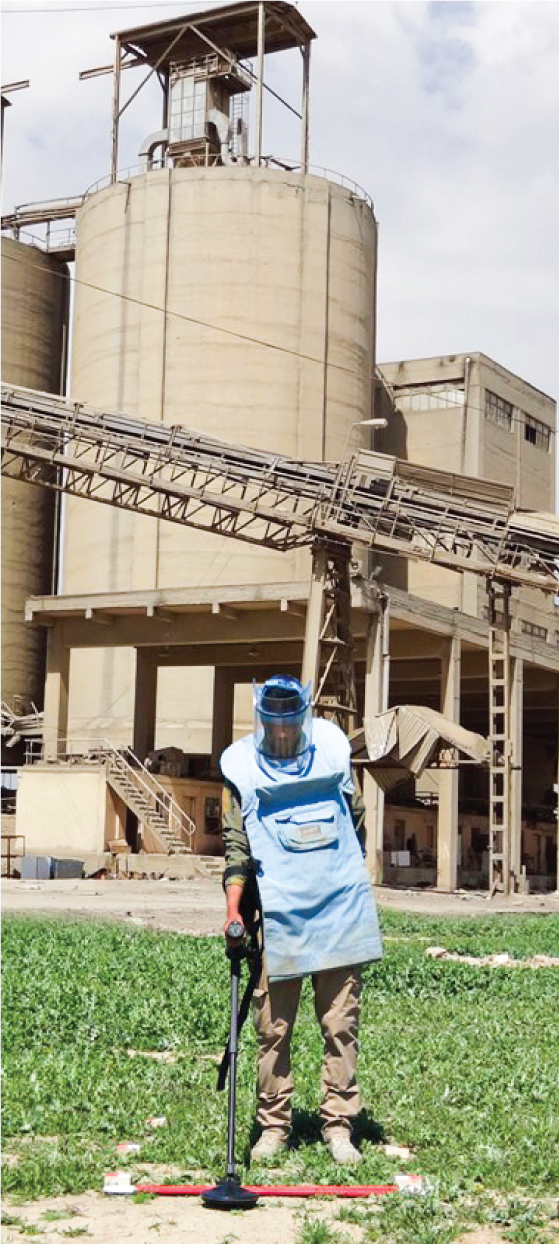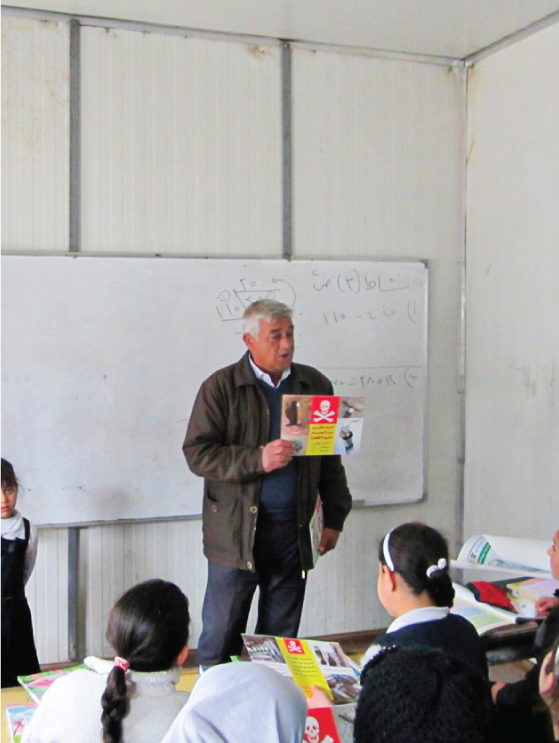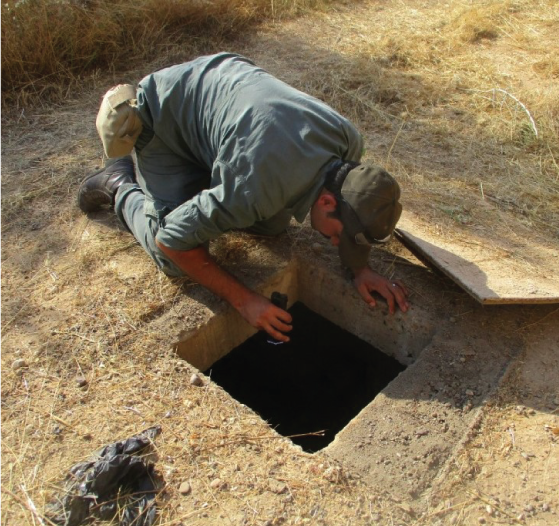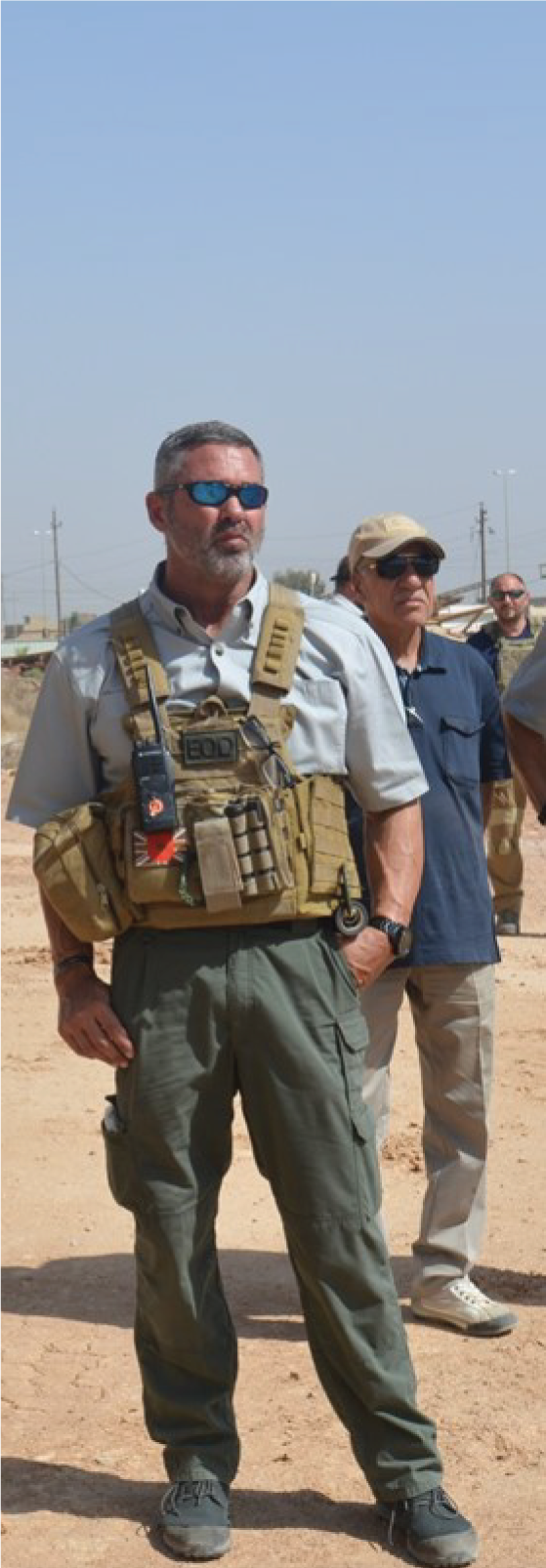What we do > DESCRIPTION OF ACTIVITIES

Non-technical Survey and Site Verification
Al Fahad's NTS Team are capable to conduct non-technical survey and assessment of tasked areas. It is likely that if an area is the subject of a Work Order for non-technical survey that there has already been a general assessment concluding that the area has a probability of containing hazardous devices. Non-technical survey is a critical phase of the overall clearance process as it is the first opportunity to limit sensibly the size of the overall area which will subsequently require physical intervention through technical survey or clearance operations. Non-technical survey activities shall include:
1
Desk assessments;
2
General assessment of the task area to assess conditions, plan of action, confirmation of hazards without physical intervention into the hazardous area;
3
Collection and assessment of historical data;
4
Gather information to assess the presence of and possibly even the quantity and rough locations of EH. This could include civilian witness sources, military sources, landowners, local authorities, available maps indicating possible hazards, any;
5
Conduct liaison with key stakeholders including military and police;

Community Liaison and Risk Education
information in order to create safe spaces around their homes.
Al Fahad is deploying a CLO who will be responsible for this task. The CLO will engage with local populous and whilst attaining useful information which will in combination inform the community of the EH program.
Risk Education in the emergency environment refers to efforts in an emergency to raise awareness of the threat from EH and to promote safe behavior among the largest number of civilians potentially at risk, particularly children, in the shortest possible time. In an emergency, for reasons of time, most of the communication will normally be one-way instead of the normal exchange of information during a formal RE session / curriculum-based RE. The aim is to reach the greatest number of at-risk people in the shortest possible timeframe with information about the explosive threat and basic safety messages to encourage safe behavior.
The project team and the RE Officers will produce RE Materials suitable for the threats identified in the specific Area of Operations.
Al Fahad is deploying a CLO who will be responsible for this task. The CLO will engage with local populous and whilst attaining useful information which will in combination inform the community of the EH program.
Risk Education in the emergency environment refers to efforts in an emergency to raise awareness of the threat from EH and to promote safe behavior among the largest number of civilians potentially at risk, particularly children, in the shortest possible time. In an emergency, for reasons of time, most of the communication will normally be one-way instead of the normal exchange of information during a formal RE session / curriculum-based RE. The aim is to reach the greatest number of at-risk people in the shortest possible timeframe with information about the explosive threat and basic safety messages to encourage safe behavior.
The project team and the RE Officers will produce RE Materials suitable for the threats identified in the specific Area of Operations.

Search, Clearance and IEDD/EOD in Urban Space and Residential Areas
The Clearance Team are under the overall on-site, daily command-and-control of the Team Leader. HRS/EOD/IEDD search and clearance in the urban environment is expected to be exacting and slow. The obstacles to clearance are more complicated when compared with clearance operations in the rural environment. The Team will be required to conduct clearance against a highly mixed array of explosive hazards with a potential for high density contamination. IEDs will require extreme caution on approach and at all stages of the disposal operation. Destroyed and partially destroyed buildings are already a risky operating environment. Control of the safety cordon in areas where line-of-sight will usually be obstructed imposes yet more challenges to the conduct of safe operations.
Clearance operations will be conducted in stages and will probably need various processes which are repeatable until clearance to the required tolerance is achieved. The primary activities will be manual search and clearance. The first process that will be required is to divide the area by type, for example buildings and roads. This will then require a risk assessment of each. The main aim is to identify the process based on risk that will be applied. The task area will also need to be isolated to ensure the search can be conducted without the threat of command-initiated devices.
Clearance operations will be conducted in stages and will probably need various processes which are repeatable until clearance to the required tolerance is achieved. The primary activities will be manual search and clearance. The first process that will be required is to divide the area by type, for example buildings and roads. This will then require a risk assessment of each. The main aim is to identify the process based on risk that will be applied. The task area will also need to be isolated to ensure the search can be conducted without the threat of command-initiated devices.

Search, Clearance and IEDD in Open Area
The Clearance Team are under the overall on-site, daily command-and-control of the Team Leader. HRS/EOD/IEDD search and clearance in the Open Area environment is expected to be quicker than Urban. When encountering villages, farm complexes or other built assets in the rural environment. the Team may employ the methodologies described in para 2.11.3.
Clearance operations will be conducted in stages and will probably need various processes which are repeatable until clearance to the required tolerance is achieved. The primary activities will be: manual search and clearance, mechanically-assisted removal of explosive hazards where possible.
The first process that will be required is to divide the area by area. This will then require a risk assessment of each area. The main aim is to identify the process based on risk that will be applied.
Clearance operations will be conducted in stages and will probably need various processes which are repeatable until clearance to the required tolerance is achieved. The primary activities will be: manual search and clearance, mechanically-assisted removal of explosive hazards where possible.
The first process that will be required is to divide the area by area. This will then require a risk assessment of each area. The main aim is to identify the process based on risk that will be applied.

Surge Capacity - Mechanical Component
The Mechanical capacity is a surge capacity at this time. The system below is written to ensure that the mechanism for using mechanical is understood.
The Clearance Team are assisted by mechanical assets whenever possible. In urban spaces environments, and where suitable also in the rural environment, machines are used to remove rubble once each visible surface layer has been cleared by manual searchers. Rubble or partially standing structures are removed by a combination of front-end loaders and tracked excavators. The choice of machine for scenarios encountered shall be on a case by-case basis decided by Operations Manager, Team Leader and Mechanical Supervisor. Based on a situational judgment call by Team Leaders, following the removal of layers of rubble, subsequent surface inspections by manual HRS/EOD/IEDD searchers will occur. The next level of rubble will be removed. The process arecontinueing until the ground surface has been reached and cleared - all rubble removed.
Removed rubble are transported in via front-end loader bucket to nearby inspection areas pre-prepared before the start of operations, situated close to the area being worked. Once rubble are removed to an inspection area has received final HRS/EOD/IEDD clearance in the inspection area, cleared rubble are loaded onto a dumper truck and taken away for final disposal (it is assumed that final disposal solutions will be the decision of local municipal authorities and out with the contract SoW). Mechanical assets will be moved between worksites by flat-bed low-loader articulated trucks when the distance between worksites exceeds 10km. below 10km the machines will self-drive between work sites.
In urban areas, where damaged or destroyed structures/rubble exists, the above methodology will be employed. In Residential environments, and in Open Spaces where presence of hazardous explosive items has been confirmed, mechanical assets may be used in the clearance of obstacles or as part of hook-and-line operations against individual EHs. In all environments where the presence of explosive items is unconfirmed, technical survey (TS) will be conducted. In TS operations, front-end loaders may be employed to excavate soil down to approx. 20cm in open areas to prove the presence (or not) of explosive hazards. If a machine causes detonation or reveals an explosive device which is physically disrupted, manual HRS/EOD/IEDD searchers will conduct clearance from the seat of the detonation or the location of the disrupted item out to 10m in all directions creating a box of 20m x 20m to be manually cleared.
The Clearance Team will have a surge capacity of one mechanical support team (1 x front-end loader; 1 x tracked excavator).
The Clearance Team are assisted by mechanical assets whenever possible. In urban spaces environments, and where suitable also in the rural environment, machines are used to remove rubble once each visible surface layer has been cleared by manual searchers. Rubble or partially standing structures are removed by a combination of front-end loaders and tracked excavators. The choice of machine for scenarios encountered shall be on a case by-case basis decided by Operations Manager, Team Leader and Mechanical Supervisor. Based on a situational judgment call by Team Leaders, following the removal of layers of rubble, subsequent surface inspections by manual HRS/EOD/IEDD searchers will occur. The next level of rubble will be removed. The process arecontinueing until the ground surface has been reached and cleared - all rubble removed.
Removed rubble are transported in via front-end loader bucket to nearby inspection areas pre-prepared before the start of operations, situated close to the area being worked. Once rubble are removed to an inspection area has received final HRS/EOD/IEDD clearance in the inspection area, cleared rubble are loaded onto a dumper truck and taken away for final disposal (it is assumed that final disposal solutions will be the decision of local municipal authorities and out with the contract SoW). Mechanical assets will be moved between worksites by flat-bed low-loader articulated trucks when the distance between worksites exceeds 10km. below 10km the machines will self-drive between work sites.
In urban areas, where damaged or destroyed structures/rubble exists, the above methodology will be employed. In Residential environments, and in Open Spaces where presence of hazardous explosive items has been confirmed, mechanical assets may be used in the clearance of obstacles or as part of hook-and-line operations against individual EHs. In all environments where the presence of explosive items is unconfirmed, technical survey (TS) will be conducted. In TS operations, front-end loaders may be employed to excavate soil down to approx. 20cm in open areas to prove the presence (or not) of explosive hazards. If a machine causes detonation or reveals an explosive device which is physically disrupted, manual HRS/EOD/IEDD searchers will conduct clearance from the seat of the detonation or the location of the disrupted item out to 10m in all directions creating a box of 20m x 20m to be manually cleared.
The Clearance Team will have a surge capacity of one mechanical support team (1 x front-end loader; 1 x tracked excavator).